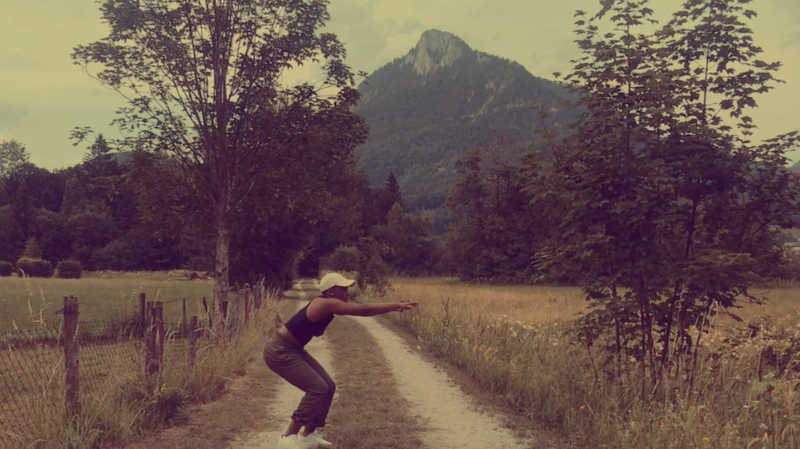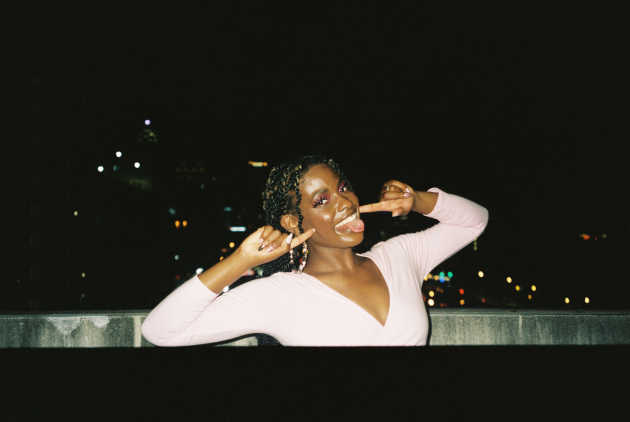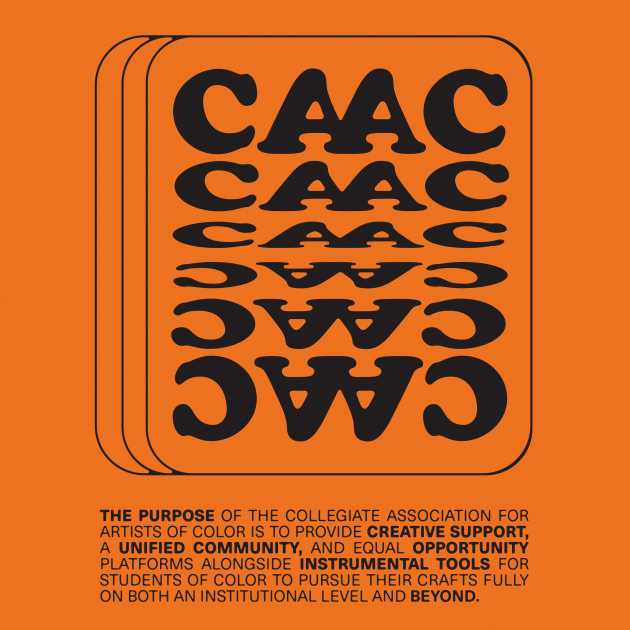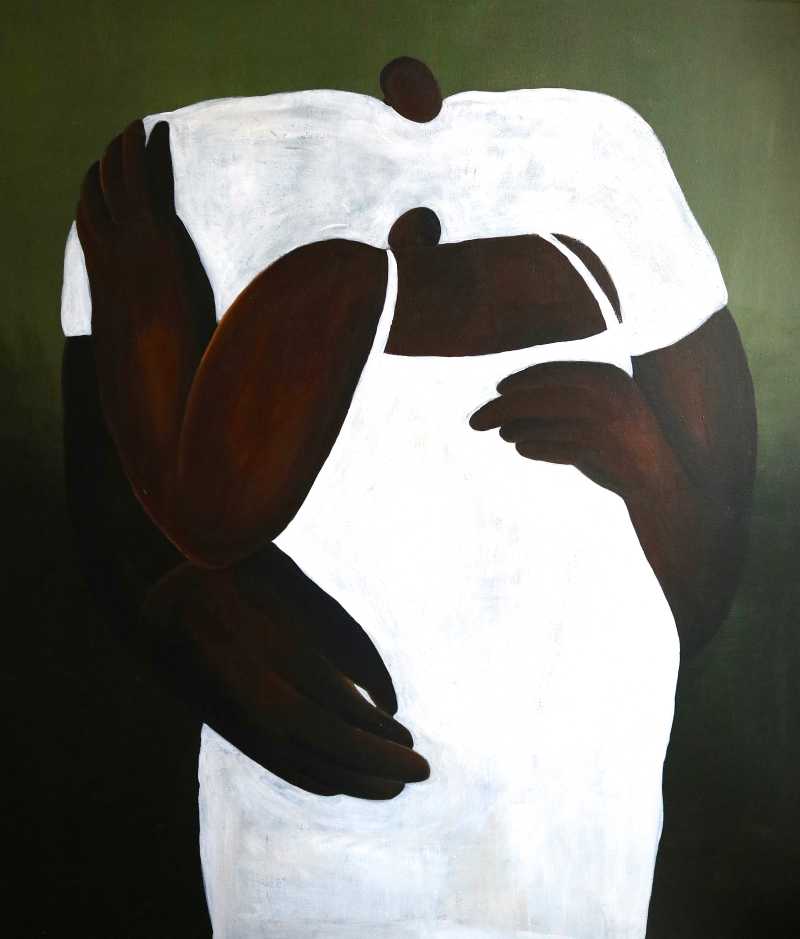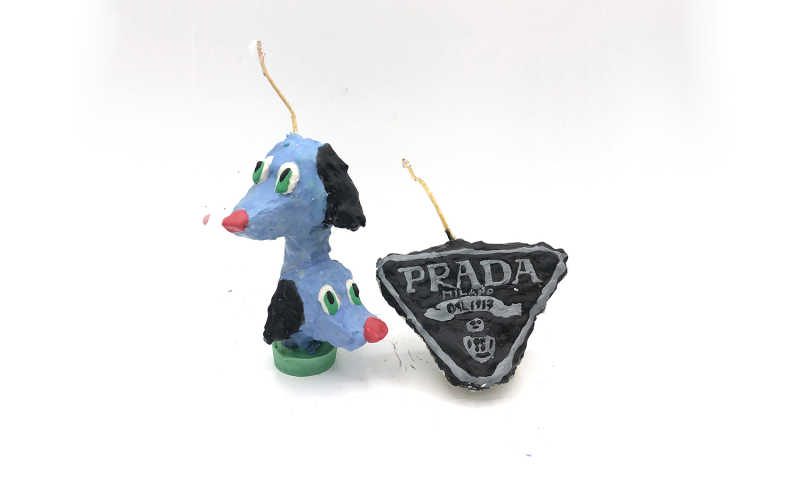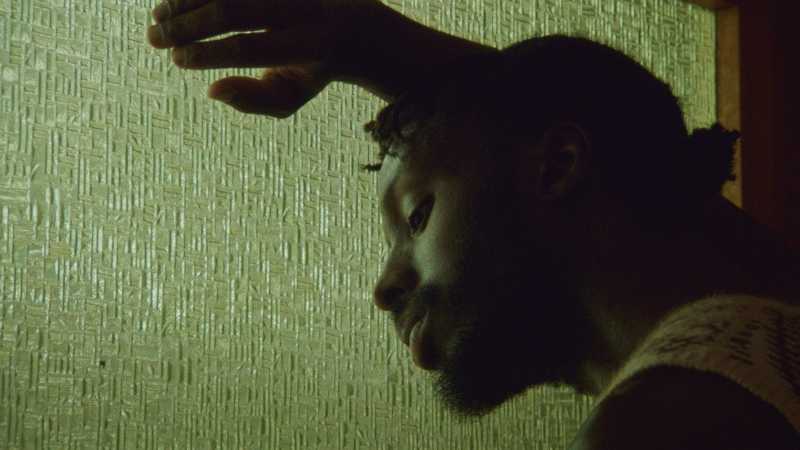Morgan is an interdisciplinary artist and founder of the Collegiate Association for Artists of Color.
What and who inspired you to become an interdisciplinary artist?
Morgan: One of my first trips to New York — it was in 2016, and I went to go see a show at BAM (Brooklyn Academy of Music) with my dad and his girlfriend. It was Shenwei Dance Arts and they were performing the piece Neither, named after the poem by Samuel Beckett, and the performance actually featured projections of the words. I’m just saying, we were really in the world. It had this sort of dark and dismal feel and it was quite repetitive a lot in the movements. And you could see where the dancers were — they had this sort of statuesque thing about them but they also could just flail their limbs so uncontrollably with no regard.
The theme of the dance was constantly being reinvented as the dance progressed. We were dealing with lots of muted colors and a lot of these conceptual ideas as far as costumes go with Shenwei — he himself actually develops the costume design and he’s really great with directing what the lighting looks like. I really felt his work was the work I’d seen in my life that actually took me somewhere. It felt very transitory, that the entire time I watched I couldn’t blink, I couldn’t do anything and I just couldn’t believe that he had full artistic control.
What fields of study are you most curious about, and at what point do they intersect with your creative practice?
Morgan: I can start by saying film. Something I’m interested in in the world of film might be screenwriting, in seeing what words look like over these dance films that I’m creating, even though it’s never been something I wanted where my dancers actually spoke in the film.
I would also say as of recently I’ve been really interested in lighting design and what that looks like, because I feel like it was the thing I disregarded most in all the works I’ve choreographed for stage. I’ve just never thought about lighting, but I think it was because I really didn’t understand enough for myself what the shading looked like, what the shadows might look like. I think I want to be able to give myself some time to really dive into that world because I can have more decisive or clear decisions about ways in which I implement lighting in my work if I actually study it off the stage because there’s light everywhere all the time.
I know you really emphasized lighting in your last work, because it changes the dancing. I know from my experience being onstage, having front lighting versus side lighting changes my perception of everything...It’s also funny that you mention not wanting the dancers to speak things in films, because I’ve always thought film was the answer to incorporating language. It’s this interdisciplinary tunnel to where language and dance can exist together.
Morgan: There is this sort of natural languid thing about a film. I mean, there’s a structure that can look different for any film made but it’s this tunnel of perception...in its final form.
What defines your ideal collaborator?
Morgan: I’m hoping to work with someone who inspires me, who I feel I can learn from. I really like learning — especially when I’m doing creative work — and working with someone who does something I really don’t know anything about. And let it be Camilla for instance, my costume designer I’ve worked with a few times. What I really loved about Camilla was all of her opinions, all of her thoughts were so unique to her — I felt like I was really able to absorb what it was she was interested in and implement that and have that in conversation with what I’m making. It was always like, wow that’s crazy I never thought about it like that, I never even thought that deeply about my costuming before, but here you are taking it to this level and it’s given me more reasoning behind my movement, and it’s just like wow, you know? It’s just like an explosion.
I feel like if I can work with someone who’s really just a sponge to me and I’m a sponge to them— I feel like having constant conversation— we can really just experience the work of the other and ask the question, say what we need to say. She’ll also ask me, do you know what you’re talking about? and I’ll be like, you know I don’t think I do, and it will interject with her idea and it will be like, that’s it, that’s what I was thinking.
I’ve always felt that designers could kind of see things that I never saw before because we tend to look at things through the physicality — I usually never think about mood and tone.
Morgan: What’s really beautiful is they think about texture a lot, which I feel coincides with movement in a very deep way. But if you’re thinking about texture, as far as costuming, material, that can tell a completely different story, it can affect your dancers’ physicality. These are definitely things I wasn’t aware of or thinking about prior to having worked with designers.
What does a typical day of creation look like?
Morgan: At the root of it all, I have to watch something. There’s this stale thing that comes about it if I don’t watch anything. I just need to dissociate for a second, like go into a different place, see someone else’s work, and oftentimes I’ll actually find that there’s a moment when what I’m watching and what I’m working on will literally meet. I’ll have this abrupt moment where I’ll be done watching it and it’s just time to write some things down. I keep my notebook close by.
Usually I never work in silence, so I’ll always have music playing. If feel a song is touching me while I’m working on an idea, I will usually put the song into a playlist that has to do with a work so I can start to go into a world and create this soundscape that I can always call back into whenever I’m like: ok let me think about this work, what is the work? what does the work look like? what are my ideas? what was I thinking once? what was I feeling once and how does that interact with where I am now?
I’ll continue the writing process, and if I have a meeting with a designer for instance, that means I’ve probably created a Pinterest board. I look at the images and in my own time write little words about them, describe them, and then sometimes I’ll give myself a task. I take that word and create — I call them collages but I usually use a single pen and merge writing and drawing to just make a world. And that drawing is kind of the saving grace. I’ll just be in a different world, it’s like I’m sleeping and doing it, it’s like a stream of consciousness, and it’s just going, and I can go for so long.
And if we’re thinking about me and movement, all I have to do is hear a good song. I play music pretty much all day out loud. If I’m standing up and there’s enough room, I will literally start moving and figuring some sort of qualitative thing that usually coincides with a song. Or, if I know the song really well and there are lyrics that I like, I’ll think about those lyrics in conversation with this image I’ve just drawn. I try to pick apart and put together a hodgepodge of words and textures and movements and songs that I already have stashed away.
And once we get into rehearsal, usually it’s just me creating the steps. I don’t really work collaboratively with the dancers in that way, in terms of them making up movement. And I’m super playful in rehearsal. I take my work seriously but also in the space, I need it to be a good time through and through. And it’s really not even for the other people, it’s really for me, so that at the end of rehearsal I can be like, you’ve done something, congrats.
What has the quarantine revealed for you in terms of the sustainability of dance as a digital art?
Morgan: That’s a really tough question. This quarantine has put dance in this space where it’s like, what is dancing? what is not dancing? Especially with this social/cultural revolution going on behind it, I think a lot of people are seeing movement in general as a form of liberation, as a form of protest, as a form of self-care, and I think the dance world is giving way to that right now, hearing that. And I think in the digital space we have a lot of dance for healing trauma right now. Like dancing for social matters, which is interesting. On a more practical front, dancing as a digital art comes with: do you have space to dance in your home? are you someone who’s fortunate enough to have a space at home where you actually can dance to your fullest extent or do you not? Or do you have a video camera that can film you while you take class? There are so many things, and at the end of the day, I know if I’m dancing enough to satisfy me on a daily basis — even if it’s just walking past a mirror in the bathroom — it’s okay, because I know I don’t want to ask too much. There’s so much going on right now, a part of me feels like it’s okay to not have everything I want, as far as dance space, being in the space with people, partnering.
It’s also nice that dance on film and dances that have already been filmed are in existence because it allows people to see a facet of the dance world. But it’s so weird because I feel like that world is not what we have anymore. Like that was once a dance world where we had: oh you can go see this show at the Joyce, oh you can go see this show at xyz. And then it also has this weird graveyard feel to it where it’s like: is the art dead? Is this now all we can make of the dance world? This is what it once was, which is again interesting coming back to the point of the revolution because: what companies are being filmed? what dances were already filmed and archived? whose work has already been preserved and can be presented, represented on these digital platforms? and who is it ignoring now? It’s so complex. But coming back to what I do, if I get in a quick little wiggle a day, it’s enough to keep me sane.
It definitely feels like an obituary when companies are presenting already staged works.
Morgan: It also feels like they’re holding onto something. It feels like they’re a bit behind, like they haven’t quite caught up to what’s actually going on right now. Like this is a crucial moment and I think they need to be decisive, because I think it also comes back to, are they trying to hold onto something to protect their image? are they trying to protect their status?
Or it’s like, are they trying to sell something?
Morgan: Yeah, it’s like, hello, can you read the room? Read the room. We’ve got concerns, bigger ones right now, which is hard, because we’re also in a country that doesn’t give a **** about what we do.
What is a wish you have for the dance community when in-person activities fully resume?
Morgan: In a perfect world, something that I am really interested in as a dancer and a choreographer is a talk-back or even a talk-before. I think it’s so important that we’re just talking, a lot more of these movement-based workshops for trauma, a lot more of let me ask a choreographer what it’s like, a day-in-the-life, these sorts of things. And also, not the birthday cake, cutesy questions. Let’s actually have talk backs where we’re having important conversations, because we’re at a time right now where our humanity is really being called on and I want us to be able to continue to pursue the things that make us human and the things that can make us good, informed people and artists.
And I want these arts activities and dance activities to be in more low income areas because it’s something where dance should be accessible to all. It’s movement, no one should be denied access to their body, access to a craft that no one owns. My ideal dance community when this is all over is just accessible to all people.
Can you briefly describe your plans for the 2020 MUSE Residency as part of the Tisch Initiative for Creative Research?
Morgan: What I’m interested in right now is reinvention and the idea of what it means to reinvent. I’m tapping into a lot of nostalgia but also simultaneous and cyclical memory and how things that have already existed before can exist again in the same space in different time frames. So reinvention, collaging, and tapping into a lot of things from my childhood that I honestly felt I had forgotten.
As the recent founder of the Collegiate Association for Artists of Color, how do you envision long-lasting change in university arts programs?
Morgan: With C.A.A.C., the Collegiate Association for Artists of Color, I was really just inspired to make it at the beginning of the summer when I was — just like most sensible people were — infuriated by the death of George Floyd. And I couldn’t really believe that I had graduated college in the middle of a pandemic; I felt like there was so much stuff that I endured in my undergraduate career as a black female dancer in the arts, in a university setting that was completely oppressive, racist, just completely inconsiderate. And the fact that, I wasn’t the only one who had experienced these things was really disheartening. Upon doing research, I saw there were no organizations specifically for all POC student artists.
So I created the organization one day, working really closely with lots of friends, and now we’re preparing for our September launch. It’s so hard to say what I envision these programs to look like, but I think that in the arts world, a rotating staff is very important, and I think the staff should be an actual representation of the students it’s teaching and should also implement every history, especially because we’re in the United States of America, we’re a global force, we’re in so many histories. It’s crazy that we ignore others, and glorify our own. We just don’t want a Eurocentric arts education, because we want to live in a world where art belongs to all and not some.
We’re trying to build creative support and build stable communities because it’s not just for black students, it’s for POC students at-large. We want to be in a space where we can also talk and discuss things that we may not know about each other as POC students, and talk about the artwork we make and what about how our histories and cultures influence who we are and our creative decisions. Because if no one else wants to hear us, we want to hear each other.
To stay updated with Morgan’s projects, follow her on Instagram @morgamirahburns and @caac.official.
